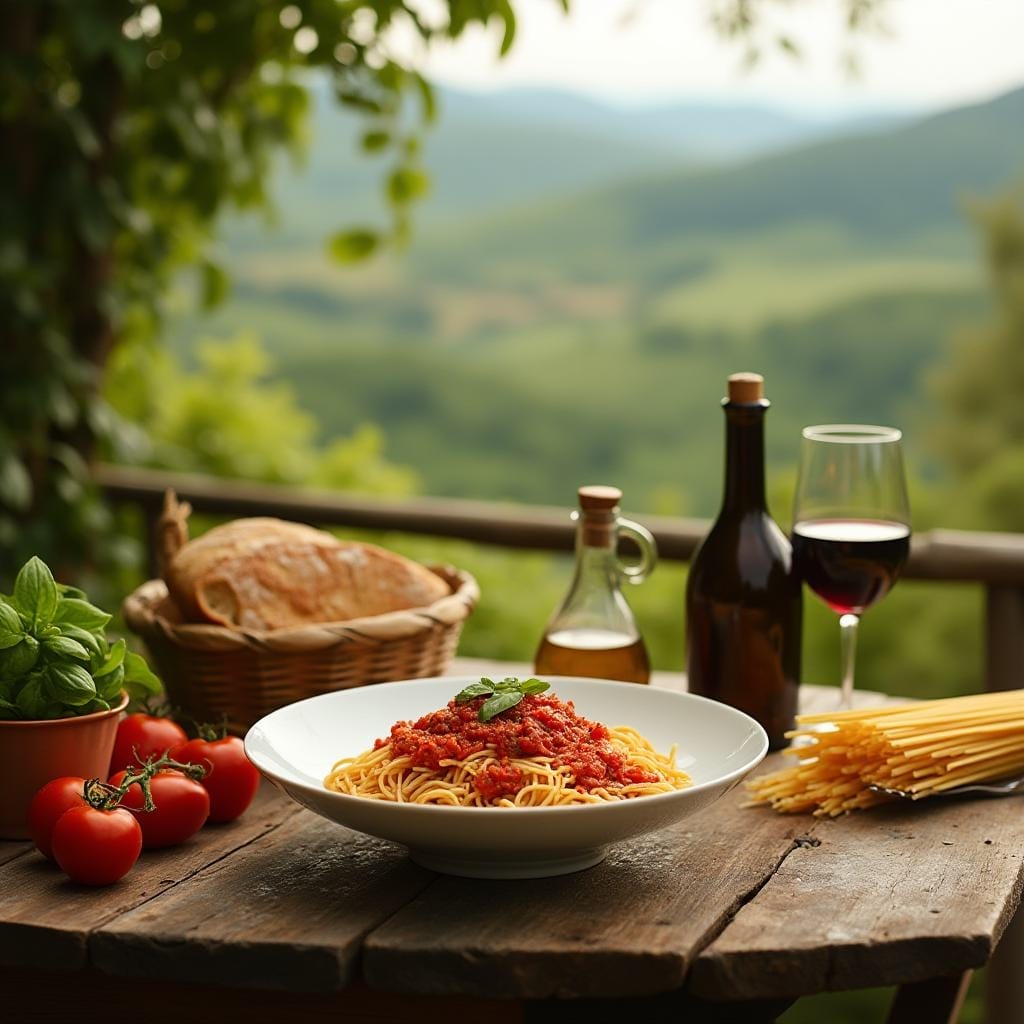Ever wondered why Italian food is so good that a simple bowl of pasta can bring so much joy? Italian cuisine holds an allure that few can resist. From the lush hills of Tuscany to the bustling streets of Naples, the secrets behind this gastronomical pleasure lie in its essence.
What is it about authentic Italian cuisine that captures our hearts and taste buds? Is it the use of fresh, high-quality ingredients, the generations-old cooking techniques, or perhaps the profound cultural tradition?
Let’s dive into the Italian culinary experience to uncover these secrets.
Fresh and High-Quality Ingredients
Italian cuisine’s magic lies in its reliance on fresh, high-quality ingredients. I believe food becomes extraordinary when we use what nature offers at its peak.
Farm-to-Table Approach
One thing that sets Italian food apart is the commitment to a farm-to-table approach. We source local Italian ingredients directly from nearby growers.
This ensures that each ingredient is as fresh and flavorful as possible. I can’t emphasize enough how this practice supports organic farming, keeping our traditions alive while helping the community thrive.
Seasonal Produce
Using seasonal produce is crucial in crafting authentic Italian recipes. Seasonal Italian recipes allow natural flavors to shine. I love how summer’s sun-ripened tomatoes bring a burst of sweetness to any dish.
Come winter, earthy truffles enhance meals with unparalleled depth. Embracing local Italian ingredients in their prime delivers a true taste of Italy all year round.
Traditional Cooking Techniques
There’s an undeniable charm in traditional Italian cooking methods that have stood the test of time. When I immerse myself in these practices, I feel a connection to generations past.
Slow Cooking
Slow cooking is central to creating depth in Italian dishes. This method allows flavors to meld beautifully. Think of a rich tomato sauce simmering for hours—it transforms simple ingredients into something extraordinary. The patience and time invested pay off in layers of flavor savored with each bite.
Artisanal Methods
Artisanship shines in the making of handmade pasta and the meticulous process of curing meats. These time-honored culinary processes require dedication and skill, producing results that are both a treat to the eyes and the palate.
Every strand of handmade pasta or slice of perfectly cured salami tells a story of craftsmanship and heritage.
Rich Cultural Heritage
Italian gastronomy is a tapestry woven through centuries of history and tradition. Each dish reflects the story of its region, echoing the past and embracing the present. Italy’s culinary history is complex, filled with layers of cultural exchanges and ancient customs.
Historical Influences
From the lavish banquets of ancient Rome to the spices brought through Mediterranean trade routes, Italian cuisine is a palimpsest of varying influences. Each heritage recipe, be it a hearty lasagna or a delicate tiramisu, speaks of a time when food was more than sustenance—it was art, tradition, and community.
These historical influences have melded together to create a rich culinary heritage. Every region boasts its own unique flavors, shaped by the past yet celebrated in the present.
The art of Italian cooking is not just about creating delicious food; it’s about preserving the stories and traditions that have been passed down through generations.

Why Is Italian Food So good?
Italian food fascinates many because of its sheer simplicity and the brilliant balance of flavors that each dish embodies. It’s not just about what ingredients are used, but how they come together to create a remarkable meal.
Simplicity in Recipes
Simple Italian cooking showcases the essence of Italian culinary principles. With only a few high-quality ingredients, a dish can achieve greatness. These recipes don’t hide behind intricate techniques. Instead, they celebrate the natural flavors of each component.
Balance of Flavors
Creating harmonious flavor profiles is an art in Italian cooking. Italian cuisine principles emphasize careful seasoning, the infusion of fresh herbs, and the seamless blend of textures. Every bite offers a testament to how less can indeed be more.
This simplicity and balance make Italian dishes feel both timeless and universally appealing. From hearty pasta to delicate tiramisu, it’s clear why Italian cuisine continues to captivate and comfort on a global scale.
Family and Community Connection
Italian food goes beyond sustenance—it’s a bridge connecting family and community. My experience tells me that Italian family dining isn’t just about the meal; it’s about the people around the table. Imagine large gatherings where every seat is filled and laughter echos through the room.
Communal meals are at the heart of this tradition. These aren’t hurried affairs; they’re events where conversations flow as freely as the wine. Whether it’s a Sunday lunch or a holiday feast, the culinary bonds we form strengthen the fabric of our relationships.
Sharing plates of pasta, antipasti, or pizza doesn’t just fill our bellies—it nurtures our souls.
This sense of togetherness is what makes Italian dining special. The warmth and love poured into each dish extend beyond the kitchen. It’s this communal aspect that adds an extra layer of flavor and makes every meal a cherished memory.
Regional Diversity in Cuisine
Italy’s culinary landscape is unparalleled. The regional Italian specialties reflect not just the geography but the heart and soul of its people. Each bite takes you on a flavorful journey from the Alps to the Mediterranean shores.
North vs. South Italy
Northern Italian cuisine is famous for its rich and buttery dishes. Here, you’ll find hearty meats and creamy sauces that warm the soul. Think of the comforting Risotto alla Milanese from Lombardy.
In contrast, Southern Italian flavors burst with the zest of the Mediterranean. Olive oil, tomatoes, and fresh vegetables reign supreme, as seen in the vibrant dishes of Sicily and Calabria.
Unique Regional Dishes
Each Italian region boasts unique dishes that tell a compelling story of local heritage and ingredients. From the robust flavors of Piedmont’s Bagna Cauda to the spicy kick of Calabria’s ‘nduja sausage, these regional Italian specialties are a testament to Italy’s diverse gastronomic identity. This dynamic variance makes Italian cuisine a joy to explore and savor.
Conclusion
At the essence of Italian food lies a fascinating blend of fresh ingredients, time-honored cooking traditions, and rich cultural heritage. It’s not just about taste but also the story each dish narrates. Every Margherita pizza or Osso Buco, serves as a tribute to Italy’s rich landscape and storied history.
This Italian gastronomic journey takes us beyond mere dining. With each bite, you delve into the soul of Italy, savoring more than just flavors but a shared heritage. Italian cuisine offers a unique culinary exploration that transcends boundaries, making every meal an unforgettable experience.
The beauty of Italian food doesn’t stem from one secret ingredient but from a harmonious blend of elements. These make each dish irresistibly delicious, grounding us in the heart of Italy. Join this culinary exploration and discover why Italian cuisine is celebrated worldwide.

